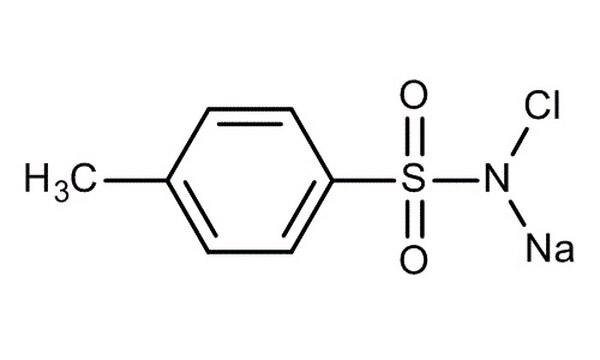Chloramine er en kjemisk forbindelse som brukes som et desinfeksjonsmiddel i vannforsyningssystemer. Det er en blanding av klor og ammoniakk som danner stabile forbindelser, primært monokloramin (NH₂Cl), dikloramin (NHCl₂) og trikloramin (NCl₃). Chloramine har blitt et populært alternativ til klor i vannbehandling på grunn av dets langsiktige desinfeksjonseffektivitet og reduserte produksjon av skadelige biprodukter.
Hva er chloramine?
Chloramine brukes hovedsakelig til å drepe bakterier, virus og andre mikroorganismer i drikkevann. I motsetning til fritt klor, som brytes ned raskt i vannsystemer, har chloramine en lengre virkningstid og kan opprettholde desinfeksjon over større avstander i rørledningsnettverk.
Kjemisk sammensetning
Chloramine er dannet ved å kombinere:
- Klor (Cl₂) – et kraftig desinfeksjonsmiddel.
- Ammoniakk (NH₃) – stabiliserer klor og reduserer dannelsen av biprodukter.

Fordeler med bruk av chloramine
- Langvarig desinfeksjon: Chloramine er mer stabil enn klor, noe som gjør det ideelt for vannsystemer med lange rørledningsnettverk.
- Reduserte biprodukter: Klorbehandling produserer ofte biprodukter som trihalometaner (THM) og haloeddiksyreforbindelser (HAA), som kan være helseskadelige. Chloramine produserer færre slike forbindelser.
- Mindre smak og lukt: Chloramine gir en mindre intens kjemisk smak og lukt i drikkevannet sammenlignet med fritt klor.
- Miljøvennlig alternativ: Ved å minimere biprodukter som kan forurense vannveier, anses chloramine som et mer miljøvennlig valg.
Ulemper og utfordringer ved bruk av chloramine
- Lenger kontaktid for desinfeksjon: Chloramine er mindre reaktiv enn klor, noe som krever lengre kontaktid for å oppnå effektiv desinfeksjon.
- Kloraminens innvirkning på helse: Selv om chloramine generelt anses som trygt, kan det forårsake irritasjon av hud og slimhinner hos sensitive personer. Visse grupper, som pasienter på dialyse og akvariefisk, må være spesielt forsiktige.
- Korrosjon: Chloramine kan forårsake korrosjon av visse metaller, spesielt bly og kobber. Dette kan føre til lekkasjer og økt risiko for blyforurensning i eldre rørledningssystemer.
- Filterproblemer: Vanlige vannfiltre fjerner ikke chloramine effektivt, noe som kan kreve spesialiserte karbonfiltre for fjerning.
Hvordan fungerer chloramine i vannbehandling?
Chloramine produseres ved å tilsette ammoniakk i vann som allerede er klorert. Forholdet mellom klor og ammoniakk er nøye regulert for å sikre dannelse av monokloramin, som er den mest effektive og stabile formen for desinfeksjon.
Trinn i behandlingsprosessen:
- Primær desinfeksjon med klor: Fritt klor tilsettes først for å drepe de fleste mikroorganismer.
- Tilsetning av ammoniakk: Ammoniakk tilsettes for å reagere med resterende klor og danne chloramine.
- Opprettholdelse av balanse: Forholdet mellom klor og ammoniakk må holdes mellom 3:1 og 5:1 for å unngå dannelse av dikloramin og trikloramin, som kan forårsake uønsket smak og lukt.
Chloramine versus klor
| Egenskap | Chloramine | Klor |
|---|---|---|
| Varighet i vannsystem | Lenger (stabil over tid) | Kort (brytes raskt ned) |
| Effektivitet | Mindre reaktiv (krever lengre tid) | Svært effektiv på kort tid |
| Biprodukter | Færre (mindre THM og HAA) | Flere (høyere nivåer av THM og HAA) |
| Smak og lukt | Mildere | Sterkere |
| Bruksområder | Langdistansevannforsyning | Kortdistanse eller akutt behandling |
Bruksområder for chloramine
- Kommunale vannsystemer: Chloramine brukes i store vannforsyningsnettverk der stabil desinfeksjon er nødvendig.
- Industriell vannbehandling: Brukes i fabrikker og produksjonsanlegg for å sikre rent prosessvann.
- Svømmebassenger: Mindre vanlig enn klor, men brukes av og til for å redusere klorlukt og irritasjon.
Helserisikoer og hensyn
Trygge nivåer
Verdens helseorganisasjon (WHO) og amerikanske EPA har satt maksimum tillatte nivåer av chloramine i drikkevann til 4 mg/l. Dette anses som trygt for daglig forbruk.
Spesielle grupper
- Dialysepasienter: Chloramine må fjernes fra vann brukt i dialysebehandling, da det kan skade blodceller.
- Akvariefisk: Chloramine er giftig for fisk og må fjernes fra vann brukt i akvarier ved hjelp av spesialfiltre.
Fjerning av chloramine
Chloramine kan ikke fjernes ved koking av vann, slik tilfellet er med klor. For å fjerne chloramine effektivt, kan du bruke:
- Katalytiske karbonfiltre: Disse er designet for å bryte ned chloramine.
- Kjemiske tilsetninger: Natriumtiosulfat og andre kjemikalier kan nøytralisere chloramine.
- Omvendt osmose: En svært effektiv metode for fullstendig rensing av vann.
Konklusjon
Chloramine er en effektiv og langvarig løsning for desinfeksjon av drikkevann, men den kommer med sine egne fordeler og utfordringer. Riktig bruk, balansering og forståelse av denne forbindelsen er avgjørende for å sikre trygt vann til husholdninger, industri og offentlig bruk. Ved behov for spesifikke løsninger som fjerning av chloramine eller optimalisering av desinfeksjonsprosesser, anbefaler vi å konsultere vannbehandlingseksperter for å sikre best mulig resultat.